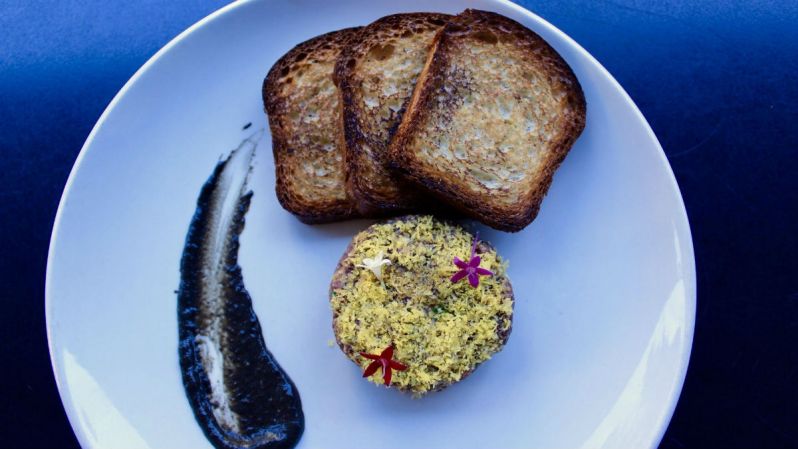It’s not often that a city gets to celebrate a 300th anniversary. Hell, our country has a whole hasn’t even done that yet, which is why it’s something special when a town reaches that mark.
This year, San Antonio, Texas will join just a few dozen other spots in the U.S. in celebrating its tricentennial with a yearlong celebration of all that is San Antonian.
Founded as the Mission San Antonio de Valero (you might remember it better as the Alamo) on May 1, 1718, San Antonio became the first chartered civil settlement in Texas in the 1730s. It has slowly grown into the seventh most populated city in the country and the second in Texas.
One of the chefs leading the charge is Steve McHugh (pictured right) of Cured at Pearl. This James Beard Award nominee cut his teeth in the restaurants of another tricentennial city, New Orleans, before heading west to San Antonio, where he opened Cured in 2013.While there will be ample educational events and opportunities for San Antonian-themed entertainment throughout the year, one of the things we’re most excited for is the food and drink that will be on display during that same stretch of time. With so much history to draw from, it’s no surprise that chefs around the city are tapping into the San Antonio area’s roots and foodways to present new looks at classic cuisine.
For the 300th anniversary, McHugh says, they wanted to take what they already do at Cured at Pearl — that is, celebrate seasonality, local farmers, and food purveyors — and take it to the next level by incorporating ingredients and dishes that have been around for centuries, but have for one reason or another, fallen by the wayside. McHugh calls these “forgotten ingredients.”
“As a chef, I’m always tinkering and learning and trying to understand my surroundings and the city I live in and understand the foodways that have been here for hundreds of years … even some before the Spanish ever arrived,” he adds.
As the seasons change, McHugh says, he will be swapping out different native ingredients in dishes and drinks. In January, for example, he highlighted pecans, which traditionally were harvested in winter and stored until later when the protein in the nuts could be used to sustain those in the area.
Another example would be the Three Sisters Chow-Chow, a dish that highlights three main crops used by different Native American groups across the country (winter squash, maize, and climbing beans). Chow-chow itself is a traditional dish that is made of pickled vegetables (the vegetables vary by region) that is well-known in Pennsylvania, New Mexico, and the South, as well as the Maritime Provinces of Canada.
McHugh is excited to work with mesquite, specifically mesquite pods ground into flour.
“In the world of Texas barbecue, people use mesquite to smoke meats. If you ask them, they’ll say it imparts a sweetness to the brisket or the other meats,” he says. “It’s the same with the pods. They’re very sweet and have a caramel-y, coconut-y, graham cracker-y flavor that works really well things like porridge or Blondies.”
A food menu of forgotten ingredients wouldn’t be complete with an accompany drinks menu, and here, too, McHugh has incorporated local ingredients to show off San Antonio’s rich history. Two cocktails, the Prickly Pear Punch and the Royel, both involve items that have been used as staples for centuries. The Prickly Pear Punch, obviously, uses prickly pears (a cactus fruit native to Southern Texas) while the Royel makes the most of mesquite beans (in the form of Wild Rag Mesquite Bean Vodka, which is made a few hours from San Antonio in Sandia, Texas).
The thrill for McHugh, he says, isn’t centered on a particular ingredient. Instead, it’s about showing off the unique cuisine of the region and bringing older foodways back to the forefront of locals’ minds.
“I’m really excited about reintroducing things that people haven’t had or even heard of before. With beautyberries, for example, we’ve had so many people say ‘We didn’t know you could cook them and eat them.’ That’s exciting for me because so many people have these things in their yards and can then look at them in a new light.”
You can find out more about Cured at Pearl (including the mouth-watering, to-die-for meat menu) here and more about San Antonio’s Tricentennial here.







